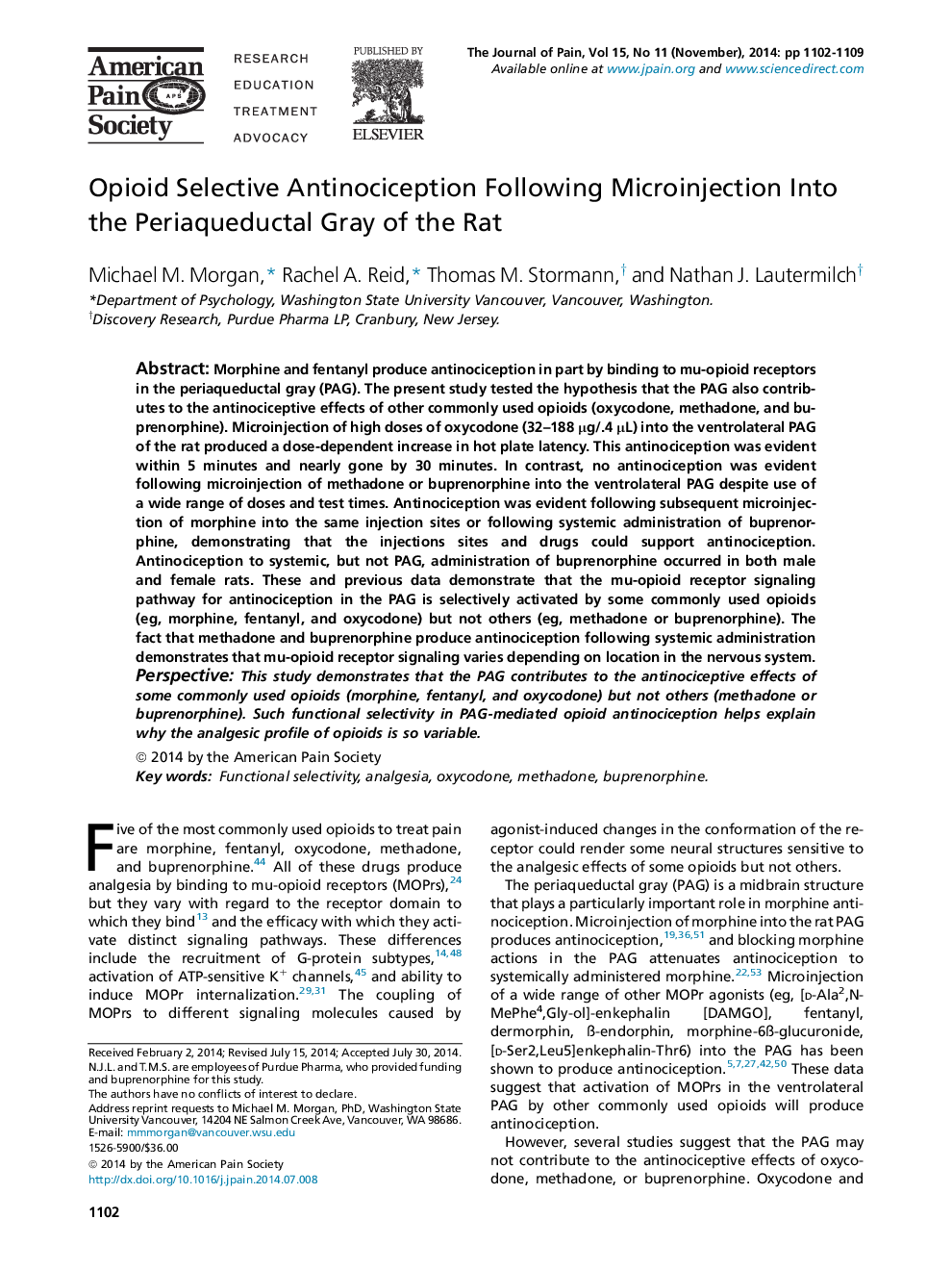| کد مقاله | کد نشریه | سال انتشار | مقاله انگلیسی | نسخه تمام متن |
|---|---|---|---|---|
| 2733737 | 1566740 | 2014 | 8 صفحه PDF | دانلود رایگان |

• The periaqueductal gray (PAG) contributes to morphine and oxycodone antinociception.
• PAG microinjection of methadone or buprenorphine does not produce antinociception.
• These mu-opioid receptor agonists produce antinociception via distinct mechanisms.
• This functionally selective antinociception contributes to opioid variability.
Morphine and fentanyl produce antinociception in part by binding to mu-opioid receptors in the periaqueductal gray (PAG). The present study tested the hypothesis that the PAG also contributes to the antinociceptive effects of other commonly used opioids (oxycodone, methadone, and buprenorphine). Microinjection of high doses of oxycodone (32–188 μg/.4 μL) into the ventrolateral PAG of the rat produced a dose-dependent increase in hot plate latency. This antinociception was evident within 5 minutes and nearly gone by 30 minutes. In contrast, no antinociception was evident following microinjection of methadone or buprenorphine into the ventrolateral PAG despite use of a wide range of doses and test times. Antinociception was evident following subsequent microinjection of morphine into the same injection sites or following systemic administration of buprenorphine, demonstrating that the injections sites and drugs could support antinociception. Antinociception to systemic, but not PAG, administration of buprenorphine occurred in both male and female rats. These and previous data demonstrate that the mu-opioid receptor signaling pathway for antinociception in the PAG is selectively activated by some commonly used opioids (eg, morphine, fentanyl, and oxycodone) but not others (eg, methadone or buprenorphine). The fact that methadone and buprenorphine produce antinociception following systemic administration demonstrates that mu-opioid receptor signaling varies depending on location in the nervous system.PerspectiveThis study demonstrates that the PAG contributes to the antinociceptive effects of some commonly used opioids (morphine, fentanyl, and oxycodone) but not others (methadone or buprenorphine). Such functional selectivity in PAG-mediated opioid antinociception helps explain why the analgesic profile of opioids is so variable.
Journal: The Journal of Pain - Volume 15, Issue 11, November 2014, Pages 1102–1109